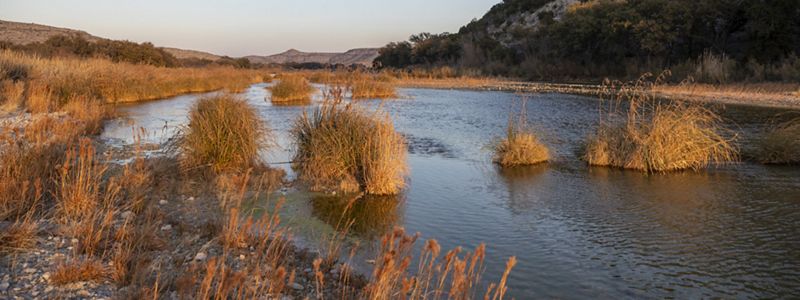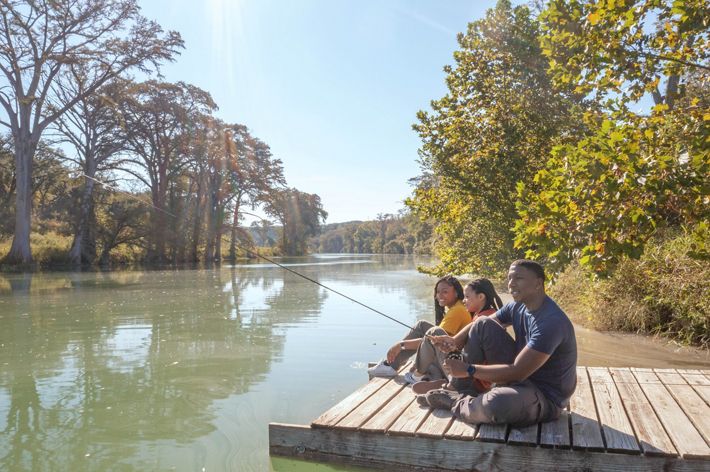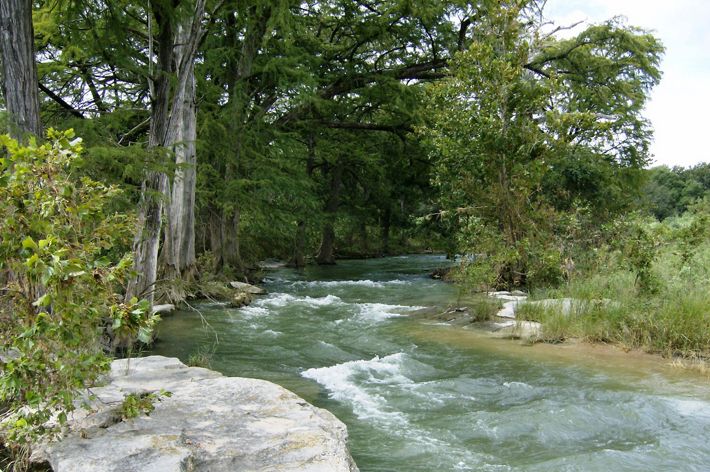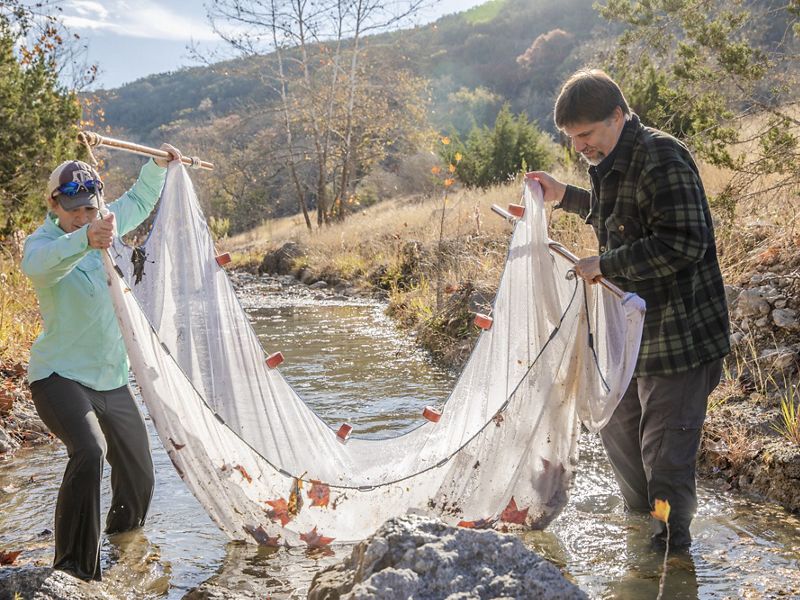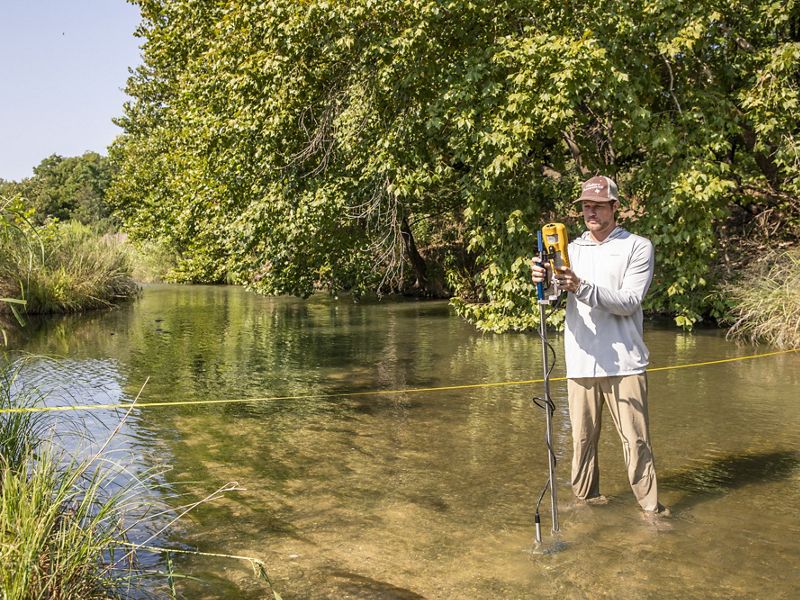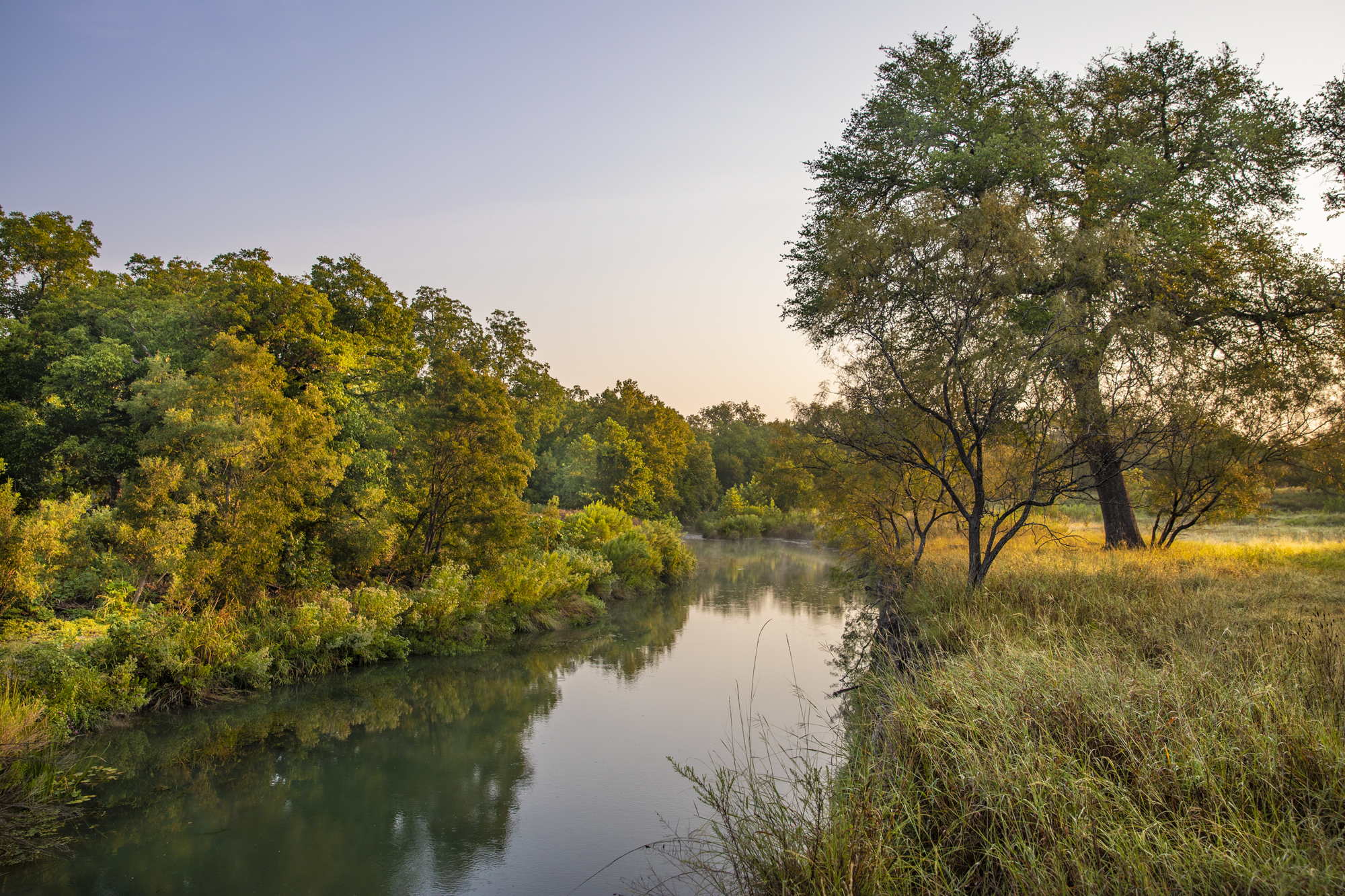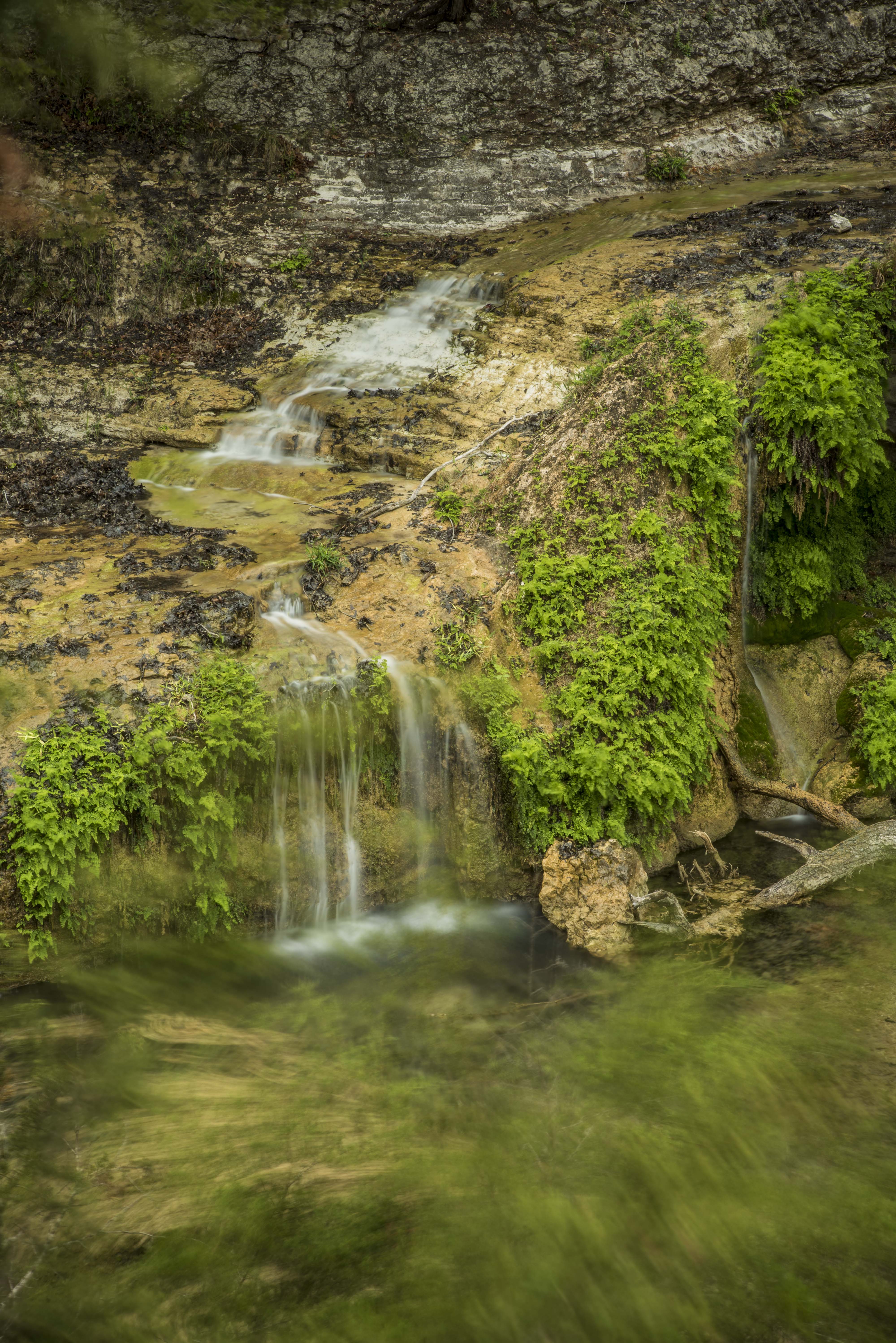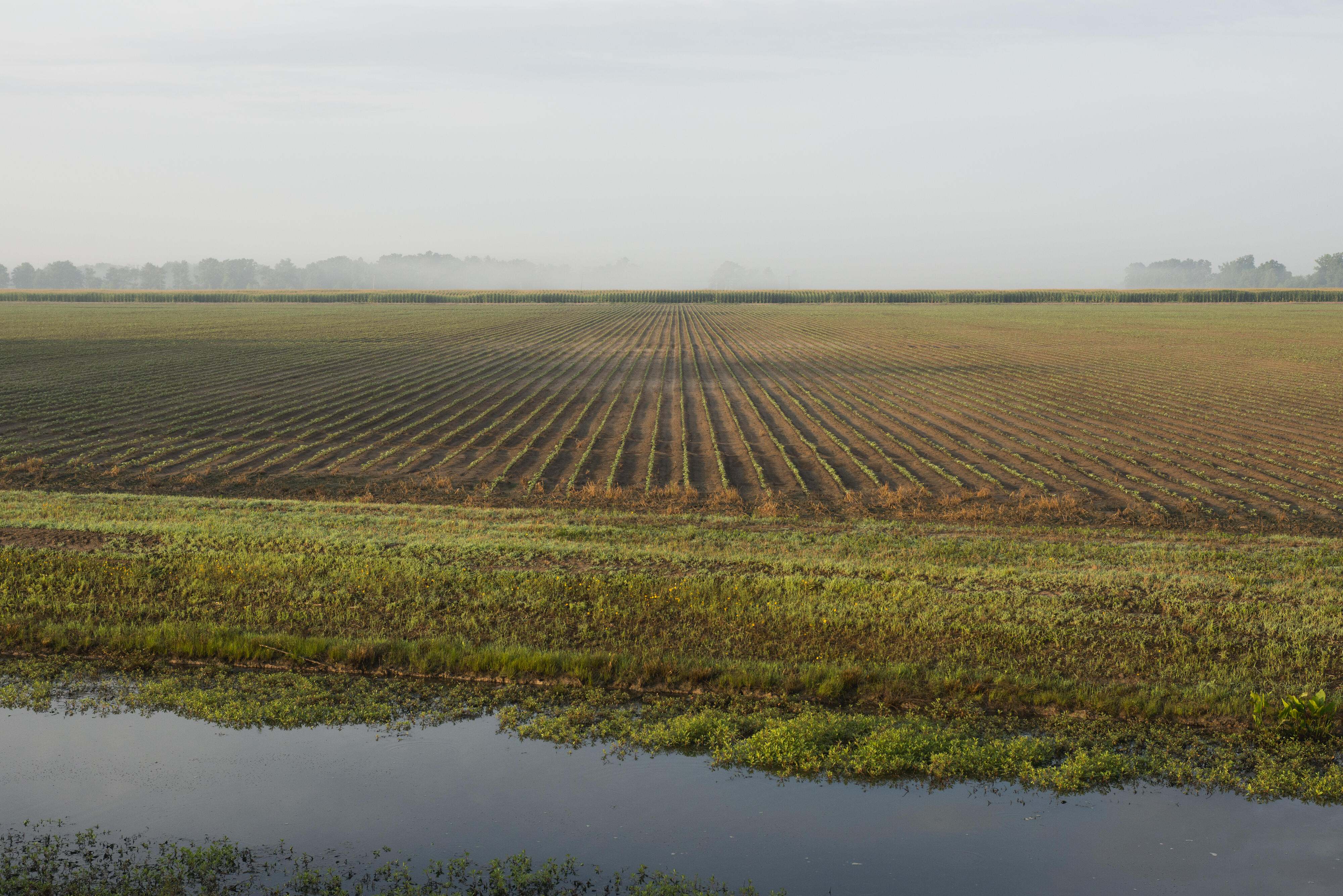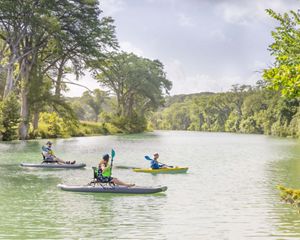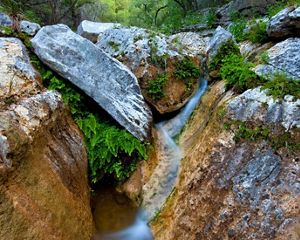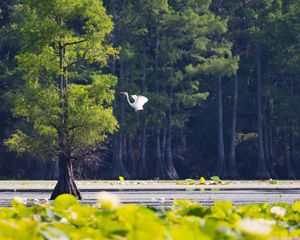
Water is the lifeblood of our state—and the key to healthy people, lands and wildlife. The Nature Conservancy in Texas has worked to protect and preserve the state’s freshwater ecosystems and water resources since our establishment in 1964. As Texas grows and prospers, securing our water future remains a critical priority for sustaining the health and resilience of our state.
In the coming years, a rapidly rising population and expanding urbanization will place undue stress on our water resources. Flow in nearly 75% of Texas rivers and water levels in all our major aquifers is declining. According to our State Water Plan, if no action is taken, we’ll be facing a statewide water shortage equivalent to an estimated $151 billion in annual economic losses by 2070.
Moreover, with 60% of our state water consumption currently supporting Texas’ leading farming, ranching and agricultural industries, only 40% remains to produce energy, service our growing cities and sustain the environment’s natural balance. At the same time, more frequent and severe drought periods and catastrophic flooding add even more uncertainty to the future of Texas’ water resources.
Conserving Healthy Lands and Waters
As a landowner in Texas, we understand how to be good stewards of our natural landscapes. Since 1964, TNC Texas has protected nearly 200 river miles through land conservation efforts. Our efforts benefit nearly a dozen different waterways around the state, including the Devils, Blanco, Trinity, Brazos, Frio, Nueces, Sabinal, Llano, San Saba and Pedernales rivers; Barton, Independence and Love creeks and Caddo Lake. Over the past 30 years, TNC has established projects on nearly every major river in Texas and five major springs.
In addition, our network of 37 Texas nature preserves, representing 100,000 acres, serves as a field lab for developing best practices for water management and land protection alongside partners, landowners, conservation organizations, businesses and government agencies across the state. Safeguarding and stewarding the natural landscapes that support and safeguard our aquifers and rivers can help ensure that water continues to flow for the benefit of all—now and well into the future.
Fast Facts: Texas Water
-

80,000
miles of rivers and streams across the state
-

31
aquifers that supply ~60% of our annual water usage
-

23
river basins throughout the state
-

7
major bays and estuaries along the Texas Gulf Coast
Managing Water for the Future
As we face a changing water landscape, TNC is working to promote informed and sustainable water management by:
- Advancing water research and policy solutions. What we do to land and water above ground impacts the quality and quantity of the water below—and all of those factors critically affect the health of our communities and the environment. Increasing decision makers’ understanding of these complex connections informs essential water protection and management efforts at local, regional and state levels.
- Strengthening best groundwater management practices. We collaborate with water resource managers across the state to fill in gaps in the science and research around groundwater and surface water dynamics. By better understanding their interaction, we can help inform decision makers about how today’s water management decisions might impact the environment in the future.
- Allocating water for the environment. When Texas’ water rights system was initially created, it granted the use of water without recognizing environmental water needs. Over time, this left little to no water to support our aquatic ecosystems and the fish wildlife that depend on them. Ensuring that portions of the state’s aquifers and rivers are protected and reserved for environmental uses ensures that our ecosystems—and the fish and wildlife that depend on them—can survive and thrive.
- Rethinking dam operations to restore river flows. In Big Cypress Bayou in northeast Texas, TNC is working to modify existing dam operations to restore the health of the surrounding ecosystem and recover the environmental and social benefits that have been compromised by dam infrastructure.
Using Market Approaches to Conserve Water
Maintaining Texas’ unique water resources and meeting the state’s future water demand isn’t possible if we continue to draw down finite water resources at the rate we are now—nor without addressing the impacts of climate change on the natural resources of our state. Innovative, market-based tools like environmental water transactions, water funds and incentive programs for sustainable agricultural practices create lasting conservation benefits in light of our growing water challenges:
Market Approaches
Texas Water Markets Publications
-
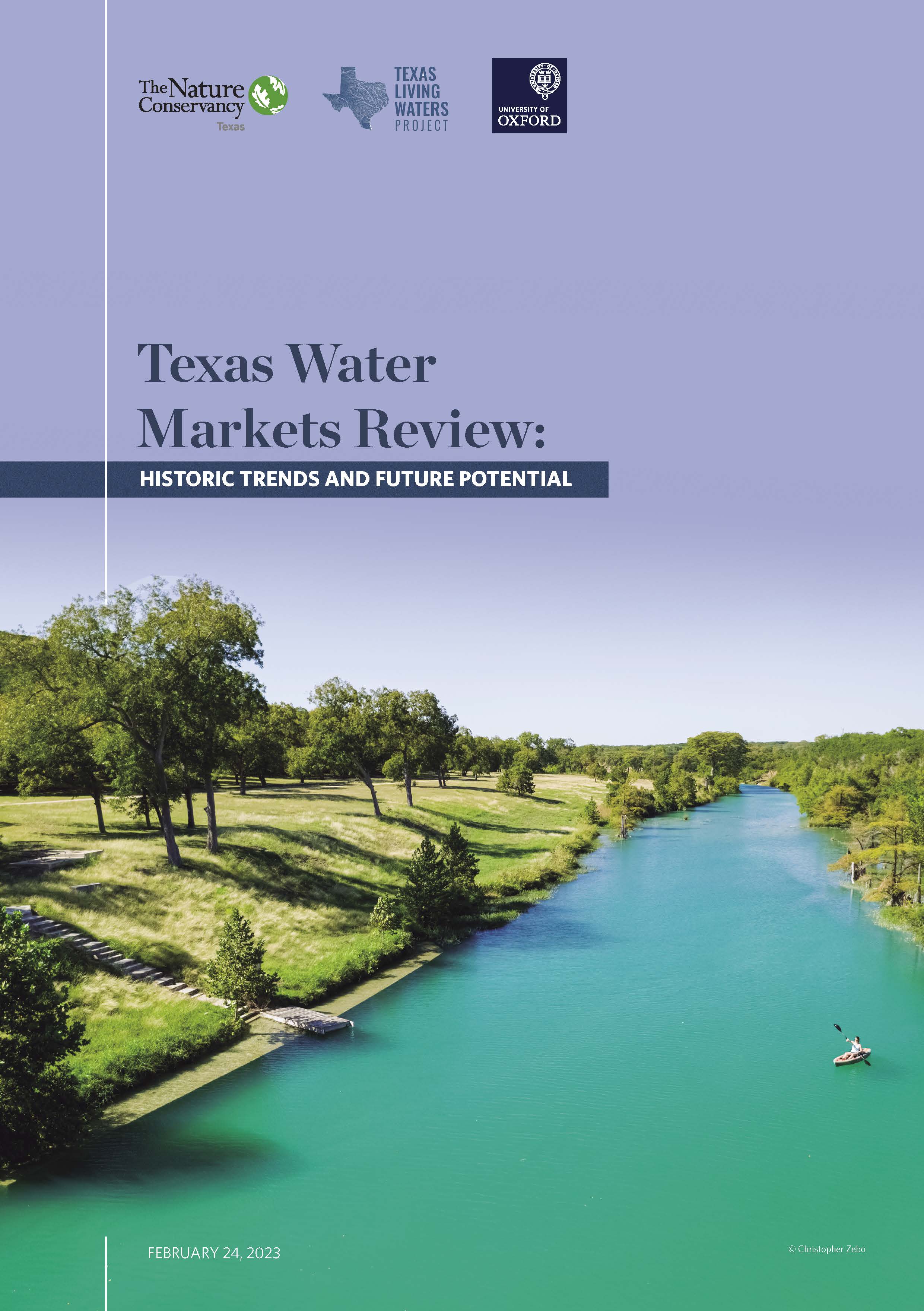 Texas Water Markets Review: Historic Trends & Future Potential
Texas Water Markets Review: Historic Trends & Future PotentialTNC and partners have conducted the first statewide analysis of historic water market trends to explore how water markets are developing.
Download -
Texas Water Markets: Trends, Drivers, and Future Potential
Learn more about where transactions have occurred, the scale of transactions, and the factors driving transactions in Texas' water markets.
Download
We Can’t Save Nature Without You
Sign up to receive monthly conservation news and updates from Texas. Get a preview of Texas's Nature News email.
